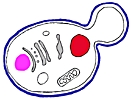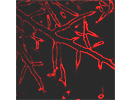Freimoser:Research
<html><style type='text/css'> A:link {
text-decoration: underline; font-size: 10pt; font-style: normal; font-family: arial, trebuchet ms; color: #003399;
}
A:visited {
text-decoration: underline; font-size: 10pt; font-style: normal; font-family: arial, trebuchet ms; color: #003399;
} A:active {
text-decoration: none; background-color: #99ccff; color: #660099;
}
A:hover {
text-decoration: none; color: #ff0033;
}
.navbar{
padding: 0px; width: "100%"; font-family: Arial; font-size: 10pt;
} </style></html>
<html> <script src="http://www.google-analytics.com/urchin.js" type="text/javascript"> </script> <script type="text/javascript"> _uacct = "UA-564843-2"; urchinTracker(); </script> </html>
Research
The focus of the research in our group is a simple molecule: inorganic polyphosphate (poly P). Poly P is a linear polymer that consists of a variable number of phosphate residues (from three to more than a thousand) that are linked by energy-rich phosphoanhydride bonds. It has been detected in all organisms and living cells and was found in many organelles. In eukaryotes, poly P is particularly prominent in fungi, algae and trypanosomatids. Poly P serves as a phosphate and energy store and regulates enzymes, chromatin condensation and translation. Poly P is also involved in bacterial pathogenicity, survival during stationary phase in bacteria and yeast, or the adaptation to alkaline and osmotic stress. In the slime mold Dictyostelium discoideum, poly P regulates development and predation behaviour, and in humans blood coagulation is accelerated and fibrinolysis is delayed by poly P.
Poly P in Saccharomyces cerevisiae: |
Cell wall localized poly P: |


